![]()
![]()
![]()
Use LEFT and RIGHT arrow keys to navigate between flashcards;
Use UP and DOWN arrow keys to flip the card;
H to show hint;
A reads text to speech;
33 Cards in this Set
- Front
- Back
- 3rd side (hint)
|
What is the phylum of sponges |
Porifera |
Latin for pore-bearer |
|
|
What are the 3 classes in phylum PORIFERA |
Calcera, Demospongiae, and Hexactinellida. |
|
|
|
Characteristics of Calcera |
Have spicules of calcium carbonate. Hard sponges usally dish shaped and drab colored. |
Look at lab manual pg497 |
|
|
Characteristics of class Demospongiae |
Soft sponges often brightly colored with siliceous spicules sometimes bound together by spongin |
Lab manual pg497 |
|
|
Characteristics of class Hexactinellida |
Glass sponges have six rayed siliceous spicules that form a glass like latice work. Usually cylinder shaped or funnel shaped. |
Lab manual pg 497 |
|
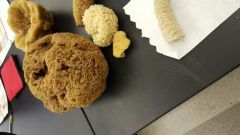
What is the class of the big sponge in the pic |
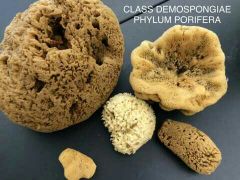
|
Soft sponges |
|
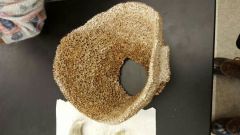
What is the class of this sponge? |
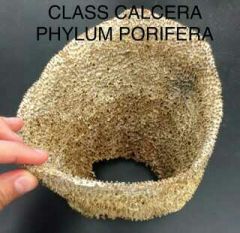
|
Hard sponges |
|
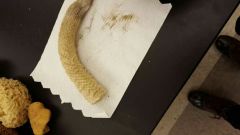
What is the class of this sponge? |
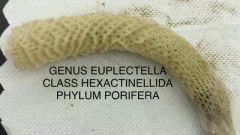
|
Glass sponges |
|
|
Spongin |
Cartilaginous protein in a lot of sponges |
Found in class Demospongiae |
|
|
Spicules |
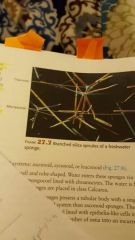
Composed of either calcium or silica they are the backbone of sponges and can be in one rayed or upto six rays |
Filaments |
|
|
What phylum has nematocystes? |
CNIDARIA |
Nematocyst are stinging cells |
|
|
What are the four classes of phylum Cnidaria? |
Classes Hydrozoa, Scyphozoa, Anthozoa, and Cubozoa. |
C.A.S.H |
|
|
What were the 3 organisms we studied in class hydrozoa? |
Hydra spp. And Obelia spp. And Portuguese Man of War (physalia physalis) |
Fed daphnia spp. To one of the organisms |
|
|
Organisms that make up class Scyphozoa |
True jellyfish we looked at Aurelia spp. |
Portuguese man of war are often confesed with these organisms |
|
|
Class a ANTHOZOA |
Composed of Corals |
|
|
|
Class Cubozoa |
Box Jellies |
Pg. 504 |
|
|
Medusa? |
The upside down cup shaped with tentacles stage of the dimorphism of cnidarians. |
|
|
|
Polyp |
Tubular sessile body of the Damned morphism of cnidarians. |
|
|
|
Cniodoblasts have nematocyste |
Stinging cells |
|
|
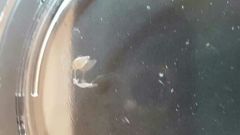
|
Hydra eating larger daphnia |
|
|
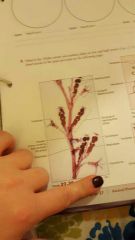
|

|
|
|
|
Clade lophotrochozoans includes what phyla |
ROTIFERA, PLATYHELMINTHES, MOLLUSCA, ANNELIDA |
|
|
|
PLATYHELMINTHES 4 classes? |
Classes Turbellaria, Cestoda, Tremetoda. Monogenea |
|
|
|
Turbellaria |
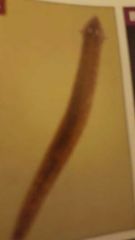
Flat worms like dugesia and bipalium |
Lab manual pg. 524 |
|
|
Cestoda |

Tapeworms including dipylidium caninum and Taenia |
Pg.524 |
|
|
Class Tremetoda |
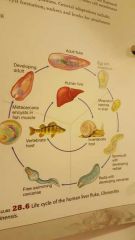
Flukes such ass Schistosoma spp. And Clonorchis sinensid |
Pg 524 |
|
|
Monogenea |
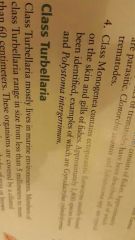
|
|
|

Tape worms |
Taenia pisiformis. Class Cestoda phyla plathelminthes |
|
|
|
6 classes of phyla MOLLUSCA |
Classes Polyplacophora, Monoplaco phora, Gastropoda, Cephalopoda, Bivalvia, and Scarphopoda |
All end in poda |
|
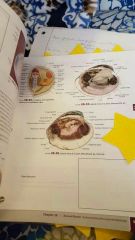
|
Class Bivalvia Mercenaria sp. |
|
|
|
Phylum ANNELIDA classes? |
Classes Polychaeta, Hitidinea. Oligocheata |
|
|
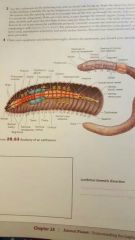
|
Earthworm phyla annelida class oligocheata. |
|
|
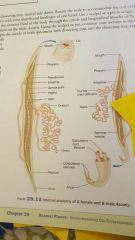
|
Ascaris phylum nematoda |
|

